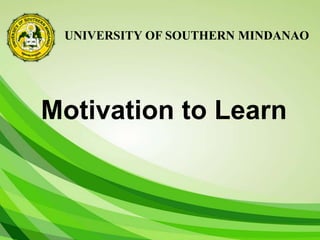This document discusses theories of motivation and their implications for education. It covers:
1) Four psychological perspectives on motivation - behavioral, humanistic, cognitive, and social.
2) Types of motivation including intrinsic and extrinsic motivation. Extrinsic motivation can initially develop intrinsic motivation.
3) Maslow's hierarchy of needs and how deficiency needs must be met before growth needs. This impacts student achievement.
4) Attribution theory which explains how people attribute success and failure to internal vs. external factors like effort. Developing an internal locus of control improves student outcomes.



















































